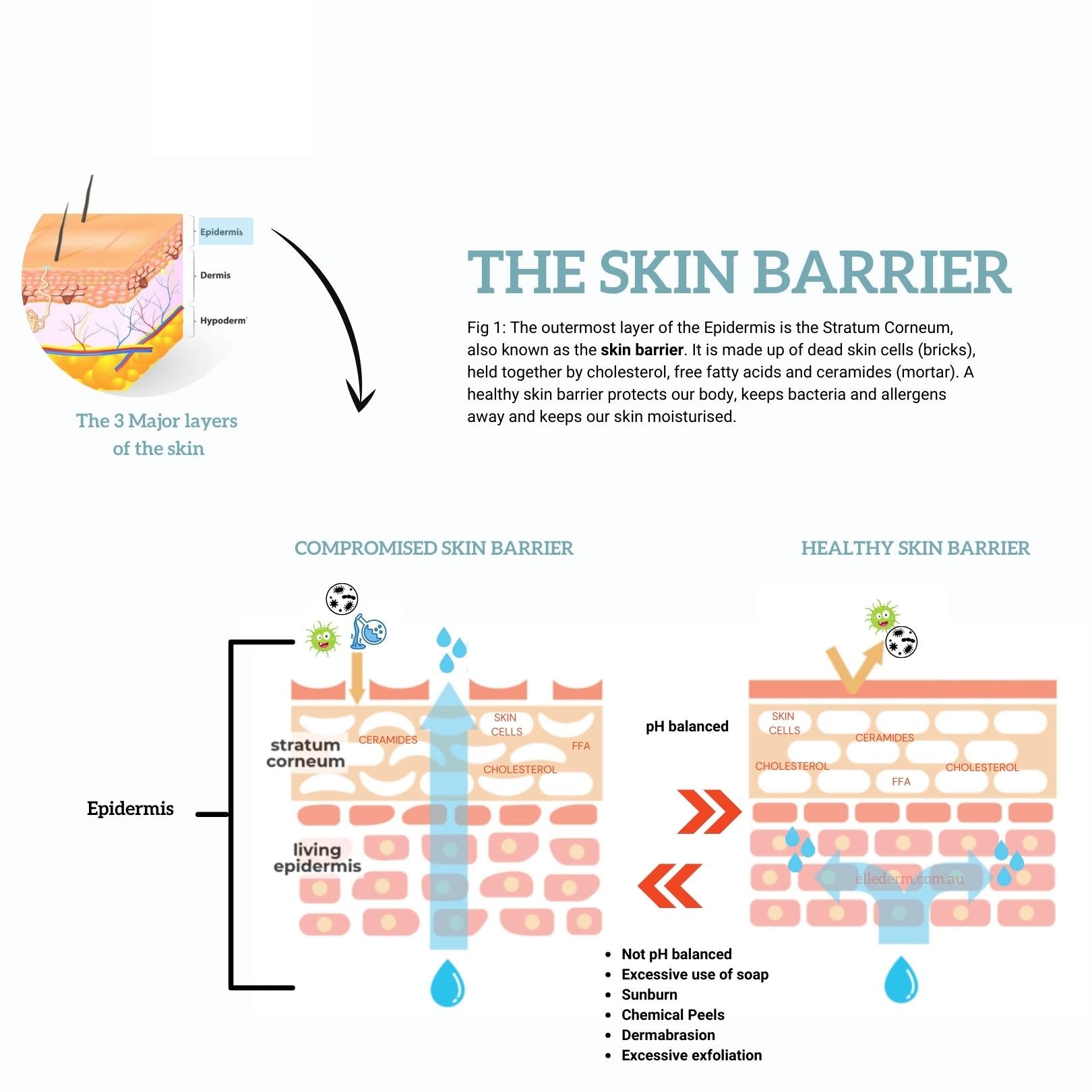Side effects of Hyaluronic Acid
Hyaluronic acid is naturally produced by our bodies. You can find large amounts of it in our skin, eyes and connective tissues. Its primary function is to retain water to keep our tissues and joints well lubricated.
Its incredible ability to hold 1000 times its weight in water allows the skin to retain moisture and collagen to stretch without snapping.
As we age, our body naturally produces less Hyaluronic Acid, resulting in a loss of skin volume and skin elasticity. For this reason, Hyaluronic Acid is undoubtedly one of the most popular ingredients in the skincare world today. Some people take it as a supplement, but it is also widely used in serums and moisturizers.
Despite its popularity, some people have reported adverse effects with Hyaluronic Acid such as dryness, breakouts and itchy skin.
Why are some people experiencing adverse effects with hyaluronic acid? Let's find out!
Side effects of Hyaluronic Acid
Hyaluronic Acid needs moisture and humidity to work effectively. When Hyaluronic Acid is applied to the skin in environments with low humidity, it draws moisture from the deeper layers of skin and brings it to the surface, leaving the skin feeling more dry.
In environments with high a level of humidity, Hyaluronic Acid can draw moisture from the air and trap it onto the skin, thus improving skin hydration and elasticity.
Hyaluronic acid is non comedogenic and is generally suitable for people with acne. However, when the skin is too dry, it will tend to over produce oil to compensate for the dryness and this can lead to breakouts.
Do we recommend Hyaluronic Acid?
Absolutely! If you live in environments with some level of humidity, Hyaluronic Acid can be your best friend! Its ability to attract and retain water not only provides the skin with plenty of hydration but it also helps transport other active ingredients across the skin barrier.
Avoid Hyaluronic Acid serums with any type of alcohol in the formulation. When alcohol evaporates, it will pull water with it and any moisture that was once on your skin is also taken away.
The best time to apply Hyaluronic Acid or Sodium Hyaluronate.
Always apply Hyaluronic Acid serums to damp skin and seal it with a good quality moisturiser for long lasting hydration.
What to use instead of Hyaluronic Acid in dry climate.
Our recommendation for dry climate is a light-weight serum rich in Ceramides, plant-base cholesterol and fatty acids. This helps to strengthen your skin barrier and builds moisture from within.
Alternatively, incorporate Hyaluronic Acid into a moisturiser. Moisturisers contain lots of emollients and occlusives which will help prevent trans-epidermal water loss.
Other alternatives to Hyaluronic Acid are Amino Acids (such as Glycine, Leucine, Lysine and Arginine), Glycerine, Aloe, Algae and Propanediol.
Sodium Hyaluronate vs Hyaluronic Acid
Sodium hyaluronate and Hyaluronic acid are used interchangeably but they are different.
Sodium Hyaluronate is the salt form of Hyaluronic Acid. Sodium hyaluronate has a lower molecular weight (smaller particle size) and is water-soluble. It is able to pass through several layers of the epidermis, allowing for deeper penetration and greater moisture retention. In contrast, Hyaluronic Acid draws water from the surrounding environment to provide surface hydration and reduce trans-epidermal water loss (TEWL).
For optimal results, it is best to combine both Sodium Hyaluronate and Hyaluronic Acid in the same skincare formulation get the best of both worlds. This method works well for dry to very dry skin.
Author: Helen Huynh B. Pharm MPS
References:
Juncan, A. et al. "Advantages of Hyaluronic Acid and Its Combination with other bioactive ingredients in cosmeceuticals." Journal of Molecules. (2021) Aug; 26(15): 4429.
Manjula Jegasothy, S et al. "Efficacy of a New Topical Nano-Hyaluronic Acid in Humans". Journal of Clinical and Asthetic Dermatology (2014) Mar; 7(3): 27–29.
Pavicic, T et al. "Efficacy of cream-based novel formulations of Hyaluronic Acid of different molecular weights in anti-wrinkle treatment". Journal of Drugs and Dermatology (2011) Sep;10(9):990-1000.



